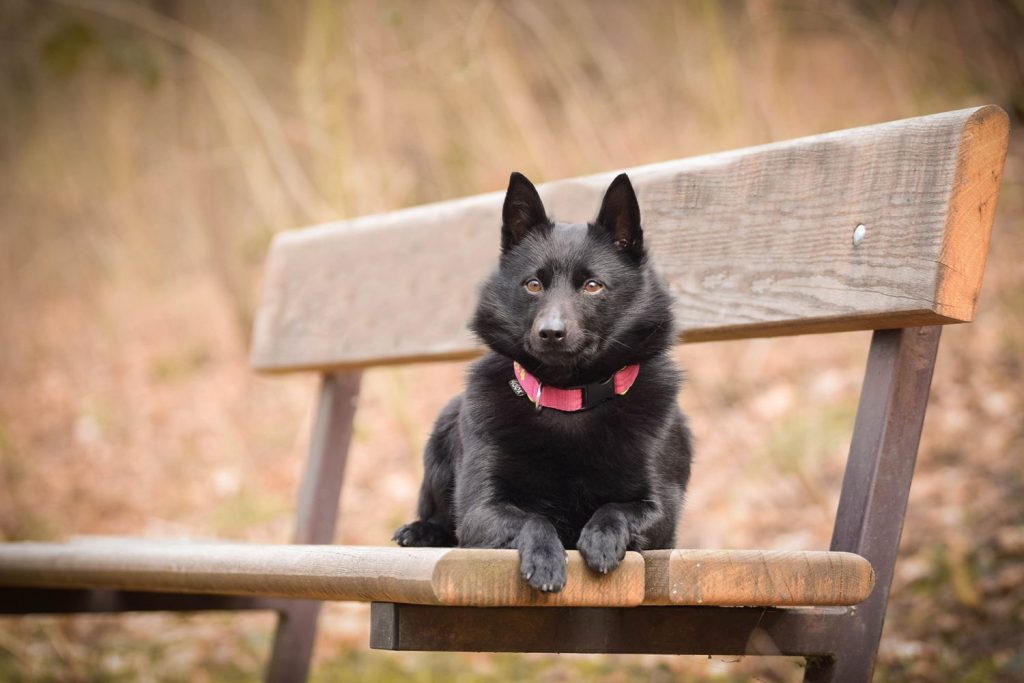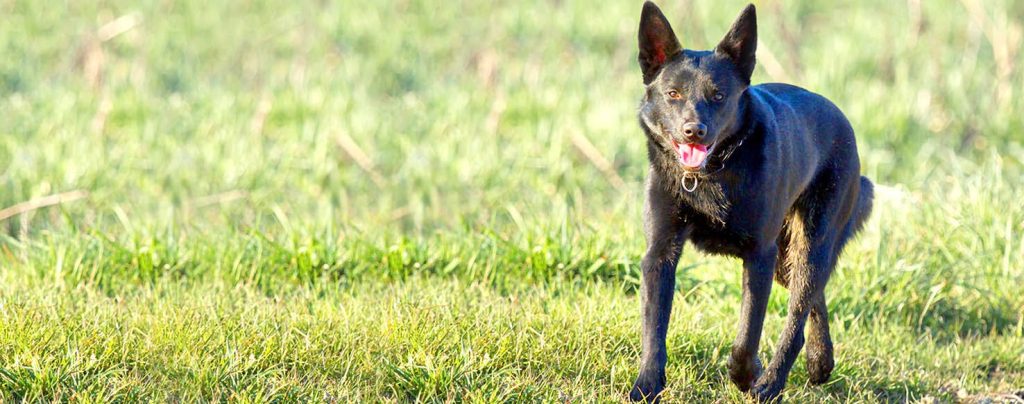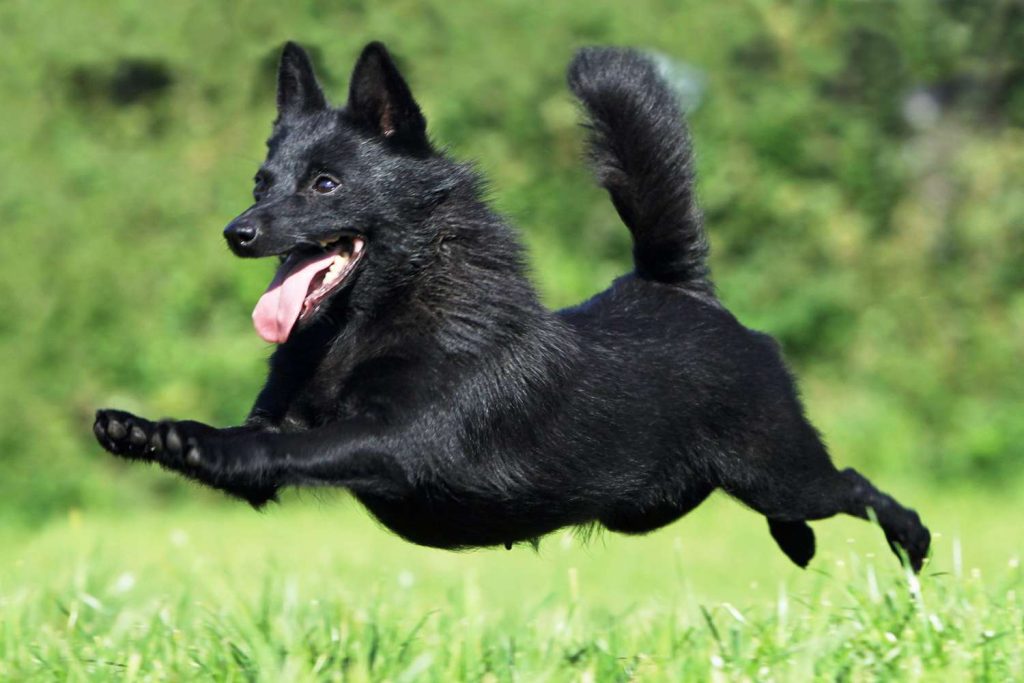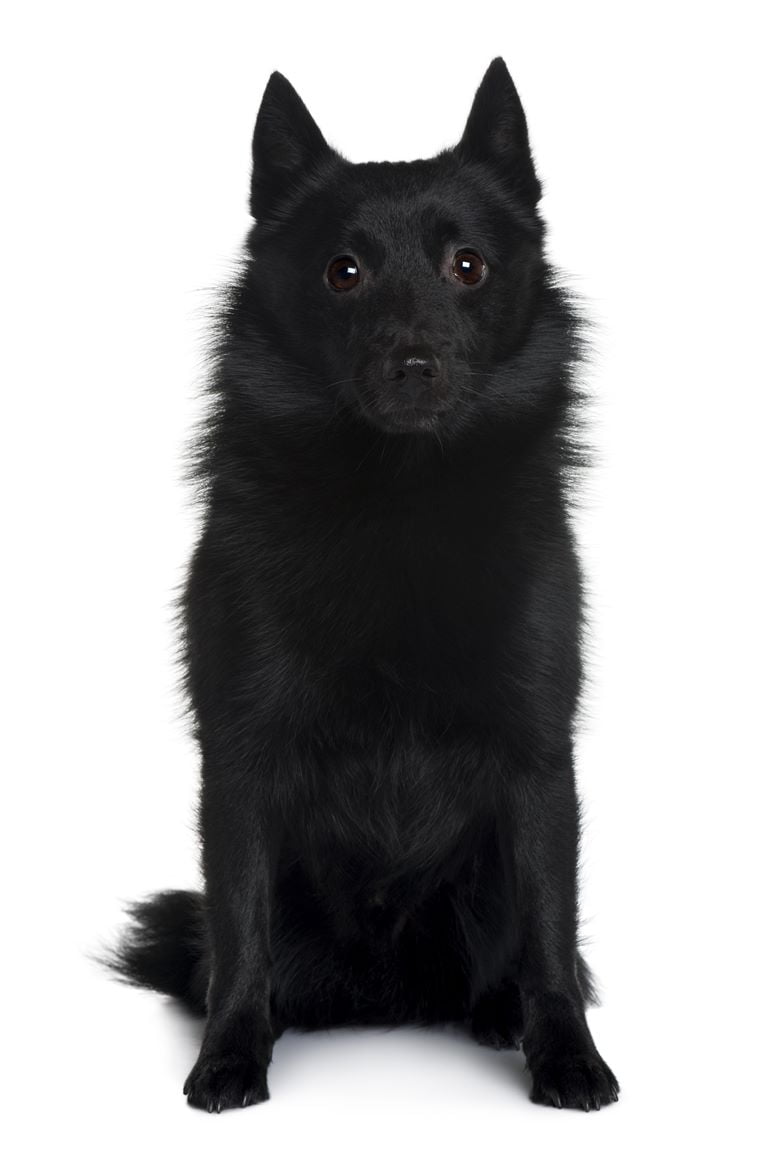Are you considering getting a Schipperke as a pet? This small and lively breed is known for their energy, intelligence, and loyalty to their owners. Originally bred in Belgium as a watchdog and ratter, Schipperkes are now popular family pets due to their playful nature and adaptability to different living situations. However, like any breed, Schipperkes have their unique characteristics and needs that potential owners should consider before bringing one into their home. In this article, we will explore the Schipperke breed and provide information to help you decide if they are the right fit for you and your family.
Breed Category: Utility
Country of Origin: Belgium
Average Size:30-33 cm
Average Weight:3-9 kg
Average Life Span: 13-15 years
Grooming Requirements: Moderate
Exercise Requirements:High
History and Origin
The Schipperke is a small breed of dog that originated in Belgium. The breed is known for its distinctive appearance, with a thick, black coat and pointed ears. Schipperkes are also known for their high energy levels and playful personalities, making them popular pets for families and individuals alike.
The history of the Schipperke can be traced back to the 17th century, when they were used as watchdogs on barges and canal boats in Belgium. The breed’s name comes from the Flemish word “schipper,” which means “boatman” or “skipper.” Schipperkes were highly valued by boatmen for their ability to keep rodents and other pests away from the cargo.
Over time, the Schipperke became popular with Belgian farmers and became a common sight in rural areas. The breed’s small size and agility made them well-suited for herding and guarding livestock. Schipperkes were also used as hunting dogs, particularly for small game like rabbits and squirrels.
In the late 19th century, the Schipperke began to gain popularity outside of Belgium. The breed was first introduced to England in 1887, and quickly became a favorite of the British royal family. Queen Victoria was particularly fond of Schipperkes, and owned several of them throughout her life.
In the United States, the Schipperke was recognized by the American Kennel Club in 1904. The breed quickly gained popularity among dog enthusiasts, and today is a common sight at dog shows and competitions. Schipperkes are also popular pets in households across the country.
Despite their popularity, Schipperkes remain a relatively rare breed. According to the American Kennel Club, there were only 1,200 Schipperkes registered in the United States in 2019. However, the breed’s unique appearance and playful personality continue to make them a favorite among dog lovers around the world.

Size and Breed Category
The Schipperke is a small breed of dog that originated in Belgium. They are classified as a toy breed and typically weigh between 3 and 9 kilograms. They have a distinctive appearance with a thick, black coat and a fox-like face. Their ears are erect and pointed, and their tails are usually docked. Schipperkes are known for their high energy levels and playful personalities. They are intelligent and independent dogs that require plenty of exercise and mental stimulation. Schipperkes are also known for their loyalty and make excellent companions for those who are willing to put in the time and effort to train and socialize them.
Despite their small size, Schipperkes are a sturdy breed with a muscular build. They have a square-shaped body and short legs, which give them a low center of gravity and make them agile and quick on their feet. Schipperkes are often compared to small black bears because of their thick, fluffy coats and their tendency to stand on their hind legs. They are a highly adaptable breed that can thrive in a variety of living situations, from apartments to large homes with yards. Schipperkes are also known for their excellent watchdog abilities and will bark to alert their owners of any potential threats. Overall, the Schipperke is a unique and charming breed that is sure to capture the hearts of anyone who meets them.
Fur Length and Colour
The fur of this breed is typically short and dense, with a slightly harsh texture. The hair is longer around the neck and shoulders, forming a ruff, and on the hindquarters, forming culottes. The fur on the tail is also longer, forming a plume. The Schipperke’s fur is usually black, but can also be brown or cream. The black fur is usually shiny and has a blue tinge in the sunlight. The brown fur is usually a warm, reddish-brown colour, while the cream fur is a pale, creamy-white. The fur colour is usually solid, but can also have small white markings on the chest and feet.
The Schipperke’s fur is relatively easy to maintain, requiring only occasional brushing to remove loose hair and prevent matting. The breed sheds moderately throughout the year, with heavier shedding occurring twice a year during seasonal changes. The fur is water-resistant, which makes it ideal for outdoor activities in wet weather. The Schipperke’s fur also provides insulation, keeping the dog warm in cold weather. Overall, the fur of the Schipperke is an important characteristic of the breed, providing both practical and aesthetic benefits.
Termperament and Trainability
Schipperkes are known for their high energy and lively temperament. They are a breed that loves to play and be active, making them great companions for those who enjoy outdoor activities. They are also very intelligent and quick learners, which makes them highly trainable. However, their independent nature can sometimes make them stubborn and difficult to train, especially if they are not properly socialized from a young age. It is important to establish clear boundaries and consistent training methods to ensure that they understand what is expected of them. Overall, Schipperkes are a fun-loving and intelligent breed that thrive on mental and physical stimulation.
When it comes to trainability, Schipperkes are known for their ability to excel in a variety of activities. They are highly adaptable and can be trained for obedience, agility, and even herding. Their small size and agility make them well-suited for activities that require quick movements and sharp reflexes. However, their high energy levels can sometimes make them difficult to handle, especially for inexperienced owners. It is important to provide them with plenty of exercise and mental stimulation to prevent them from becoming bored or destructive. With proper training and socialization, Schipperkes can make excellent companions for those who are willing to put in the time and effort to meet their needs.

Known Health Conditions
Schipperkes are prone to certain health conditions that owners should be aware of. One of the most common issues is hip dysplasia, which is a genetic condition that affects the hip joint. This can cause pain, lameness, and arthritis in the affected joint. Schipperkes may also develop patellar luxation, which is when the kneecap dislocates from its normal position. This can cause pain and difficulty walking, and in severe cases, surgery may be required to correct the problem. Additionally, Schipperkes may be at risk for eye problems such as cataracts and progressive retinal atrophy, which can lead to blindness. Regular veterinary check-ups and screenings can help detect and manage these conditions.
Another health concern for Schipperkes is a condition called Legg-Calve-Perthes disease, which is a degenerative condition that affects the hip joint. This can cause pain, limping, and muscle atrophy in the affected leg. Schipperkes may also be prone to allergies, which can cause skin irritation, itching, and hair loss. In some cases, allergies may be triggered by certain foods or environmental factors, and identifying and avoiding these triggers can help manage the condition. Finally, Schipperkes may be at risk for dental problems such as periodontal disease and tooth decay, which can cause pain, infection, and tooth loss. Regular dental care, including brushing and professional cleanings, can help prevent these issues.

Openness to Strangers
Schipperkes are known for their friendly and outgoing nature towards strangers. They are always eager to meet new people and make new friends. This breed is highly sociable and loves to be around people, making them great companions for those who enjoy having company. Schipperkes are also very curious and inquisitive, which means they are always exploring their surroundings and seeking out new experiences. This makes them a great choice for families who enjoy an active lifestyle and want a dog that can keep up with them.
Despite their small size, Schipperkes are incredibly confident and self-assured. They are not easily intimidated by new people or unfamiliar situations, and are always willing to take on new challenges. This makes them great dogs for those who enjoy travelling or exploring new places, as they are always up for an adventure. Schipperkes are also very loyal and protective of their owners, which means they will always be there to watch over you and keep you safe. Overall, Schipperkes are a great choice for those who want a friendly, outgoing, and adventurous companion.
Playfulness Level
The Schipperke is a highly energetic and playful breed of dog. They are known for their love of play and their ability to keep their owners entertained for hours on end. Whether it’s playing fetch, chasing after toys, or simply running around the yard, the Schipperke is always up for a good time. They are also highly intelligent and enjoy learning new tricks and commands, making them a great choice for owners who are looking for a dog that is both fun and trainable.
Despite their small size, the Schipperke is a breed that requires a lot of exercise and stimulation. They are not content to simply sit around the house all day and need plenty of opportunities to run, play, and explore. Owners who are willing to provide their Schipperke with plenty of exercise and mental stimulation will be rewarded with a happy, healthy, and well-behaved companion. However, those who are unable to meet the Schipperke’s exercise needs may find that their pet becomes destructive or difficult to manage.
Suitability as a Pet for Children
Schipperkes have a lively and energetic personality, making them a great choice for children who love to play and be active. They are intelligent and quick learners, which means they can be easily trained to follow commands and perform tricks. Schipperkes are also very loyal and protective of their family, which makes them great watchdogs. However, they can be quite independent and stubborn at times, so they require a firm and consistent hand in training. Overall, Schipperkes can make wonderful pets for children who are willing to put in the time and effort to properly train and care for them.

Exercise Needs
Schipperkes require a moderate amount of exercise to maintain their physical and mental health. As an active breed, they enjoy daily walks and playtime in a secure, fenced area. A minimum of 30 minutes of exercise per day is recommended, but they will happily engage in more vigorous activities such as running, hiking, and agility training. Schipperkes also benefit from mental stimulation, such as puzzle toys and obedience training, to prevent boredom and destructive behavior. It is important to note that Schipperkes have a high prey drive and should always be kept on a leash or in a secure area to prevent them from chasing after small animals.
In addition to regular exercise, Schipperkes require a balanced diet to maintain their energy levels and overall health. As a small breed, they are prone to obesity and should be fed a portion-controlled diet with high-quality protein and limited carbohydrates. Schipperkes also have a tendency to develop dental issues, so regular teeth cleaning and dental check-ups are recommended. Owners should also be aware of potential health issues such as hip dysplasia and eye problems, and schedule regular vet visits to monitor their dog’s health. With proper exercise and care, Schipperkes can live long, healthy lives and make loyal and loving companions.

Suitability for a Multi-Pet Family
Schipperkes have a reputation for being independent and strong-willed. They can be territorial and may not always get along with other pets in the household. However, with proper socialization and training, Schipperkes can learn to coexist peacefully with other animals. It is important to introduce them to other pets slowly and under supervision to ensure a positive interaction. Additionally, providing each pet with their own space and resources can help prevent conflicts.
Housing Requirements
Schipperkes require a living space that is suitable for their active and energetic nature. They need a home with a secure and enclosed garden where they can run around and play freely. The garden should be large enough to accommodate their exercise needs and provide them with enough space to explore and satisfy their curious nature. Schipperkes are known for their love of digging, so it is important to ensure that the garden is well-fenced and that they cannot escape. Additionally, they require a comfortable and warm indoor space where they can rest and relax after their outdoor activities. The indoor space should be well-ventilated and spacious enough to accommodate their size and provide them with enough room to move around.
Schipperkes also require a balanced and nutritious diet to maintain their health and wellbeing. They have a high metabolism and require a diet that is rich in protein and low in fat. It is important to feed them with high-quality dog food that is specifically formulated for their breed and age. Schipperkes are prone to dental problems, so it is important to provide them with dental chews and toys to help keep their teeth clean and healthy. Additionally, they require regular exercise and mental stimulation to prevent boredom and destructive behavior. Schipperkes are intelligent and trainable dogs, so it is important to provide them with regular training and socialization to help them develop good behavior and manners.
Summary
Schipperkes make great pets for active families who enjoy spending time outdoors. They are energetic and require regular exercise, but are also adaptable to living in smaller spaces such as apartments. They are intelligent and independent, but can be stubborn at times. Schipperkes are known for their loyalty and make great watchdogs. They are generally good with children and other pets, but early socialization is important. Overall, Schipperkes are a great choice for those looking for a lively and loyal companion.
Schipperke Dog FAQS
Schipperkes can be stubborn and independent, but with consistent training and positive reinforcement, they can learn quickly.
Schipperkes can adapt to apartment living as long as they get enough exercise and mental stimulation.
Schipperkes can be good with children if socialized properly, but they may not tolerate rough play.
Schipperkes are known to be vocal and may bark excessively if not trained properly.
Schipperkes are prone to certain health issues such as hip dysplasia, patellar luxation, and eye problems.
Yes, Schipperkes shed moderately year-round and heavily twice a year during shedding season.
Schipperkes have a lifespan of 13-15 years on average.
Schipperkes are an active breed and require at least 30 minutes of exercise daily.
Schipperkes should be brushed at least once a week and bathed every 2-3 months.
The average weight of a Schipperke is between 3.6 to 7.3 kg.
